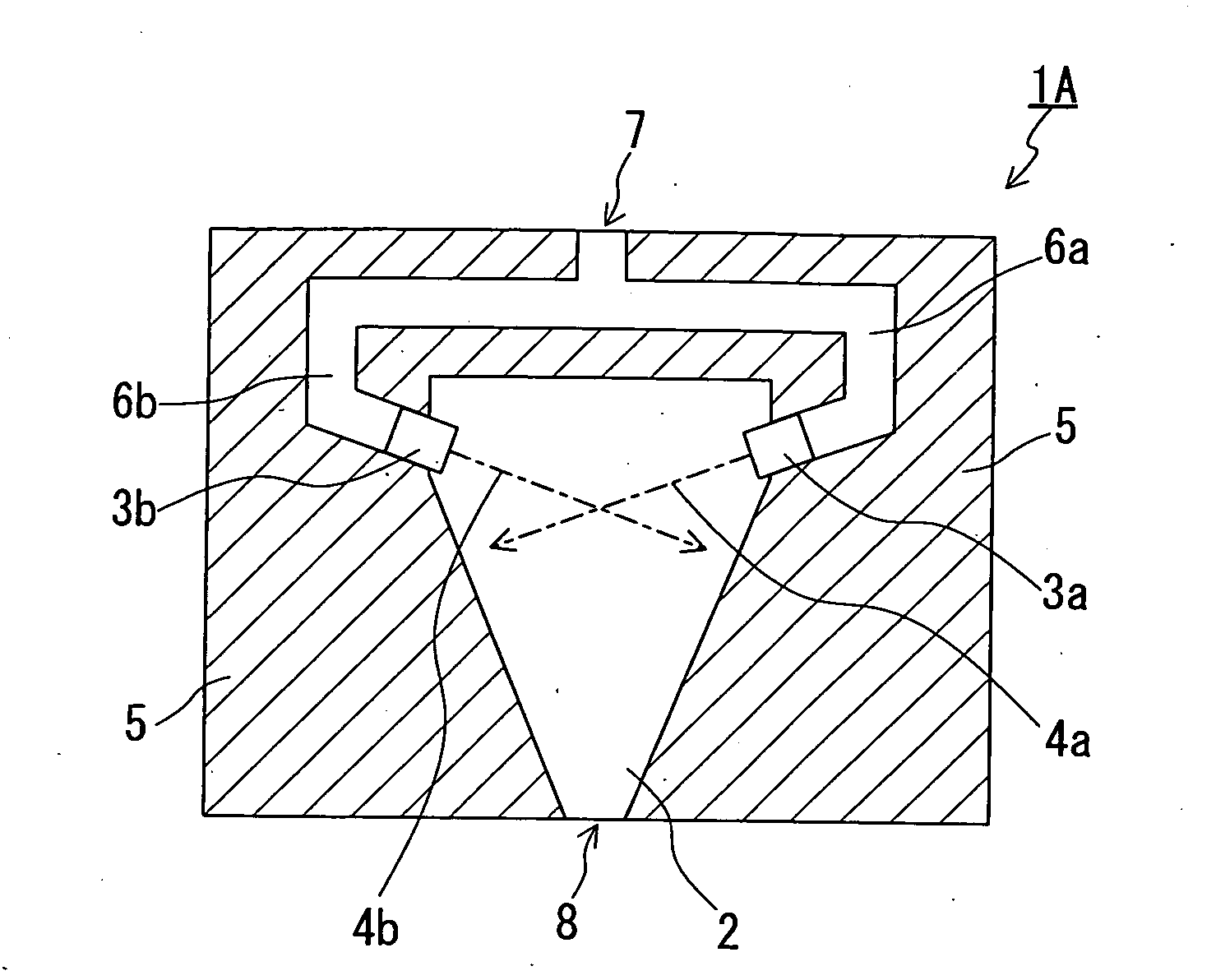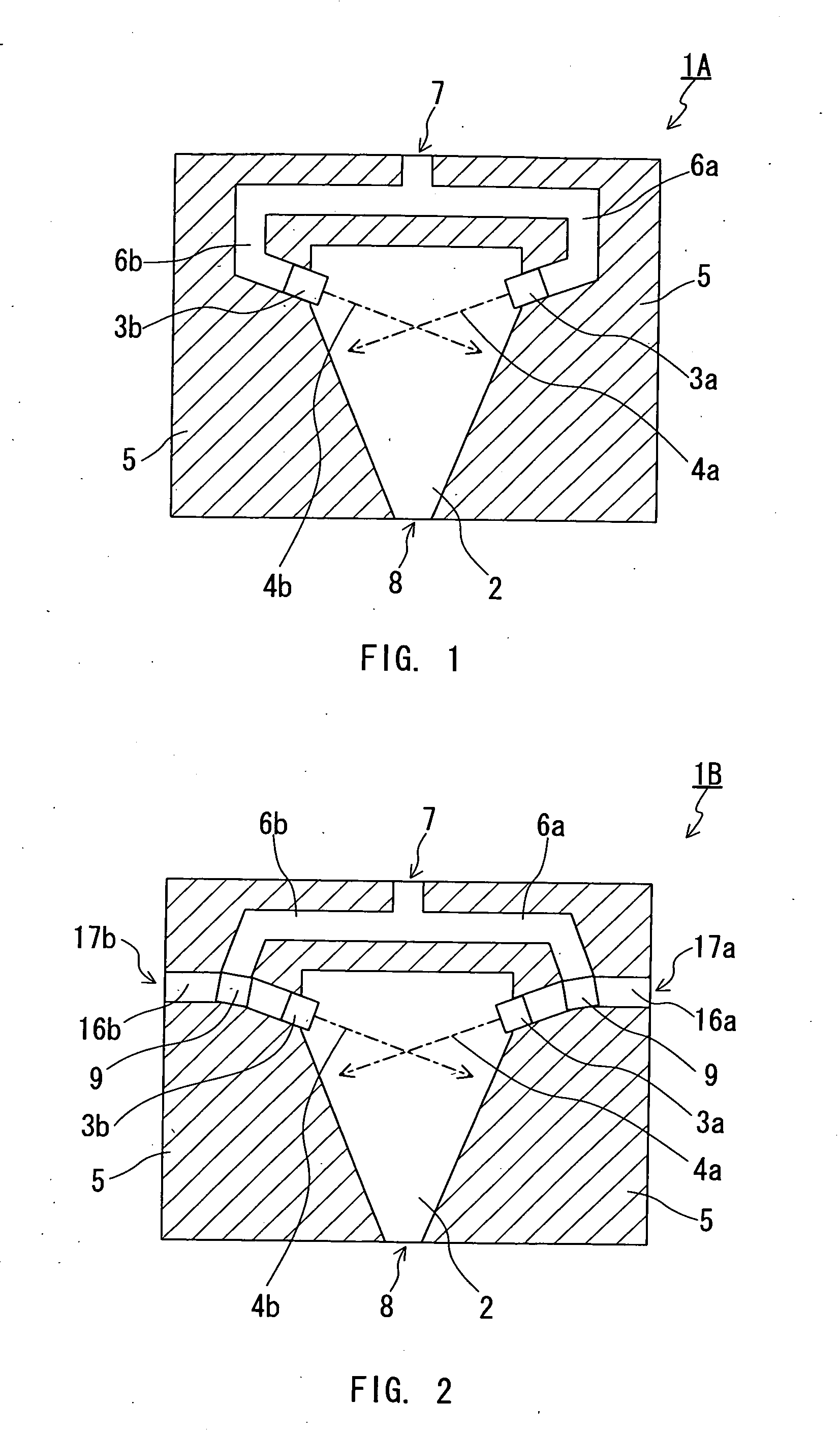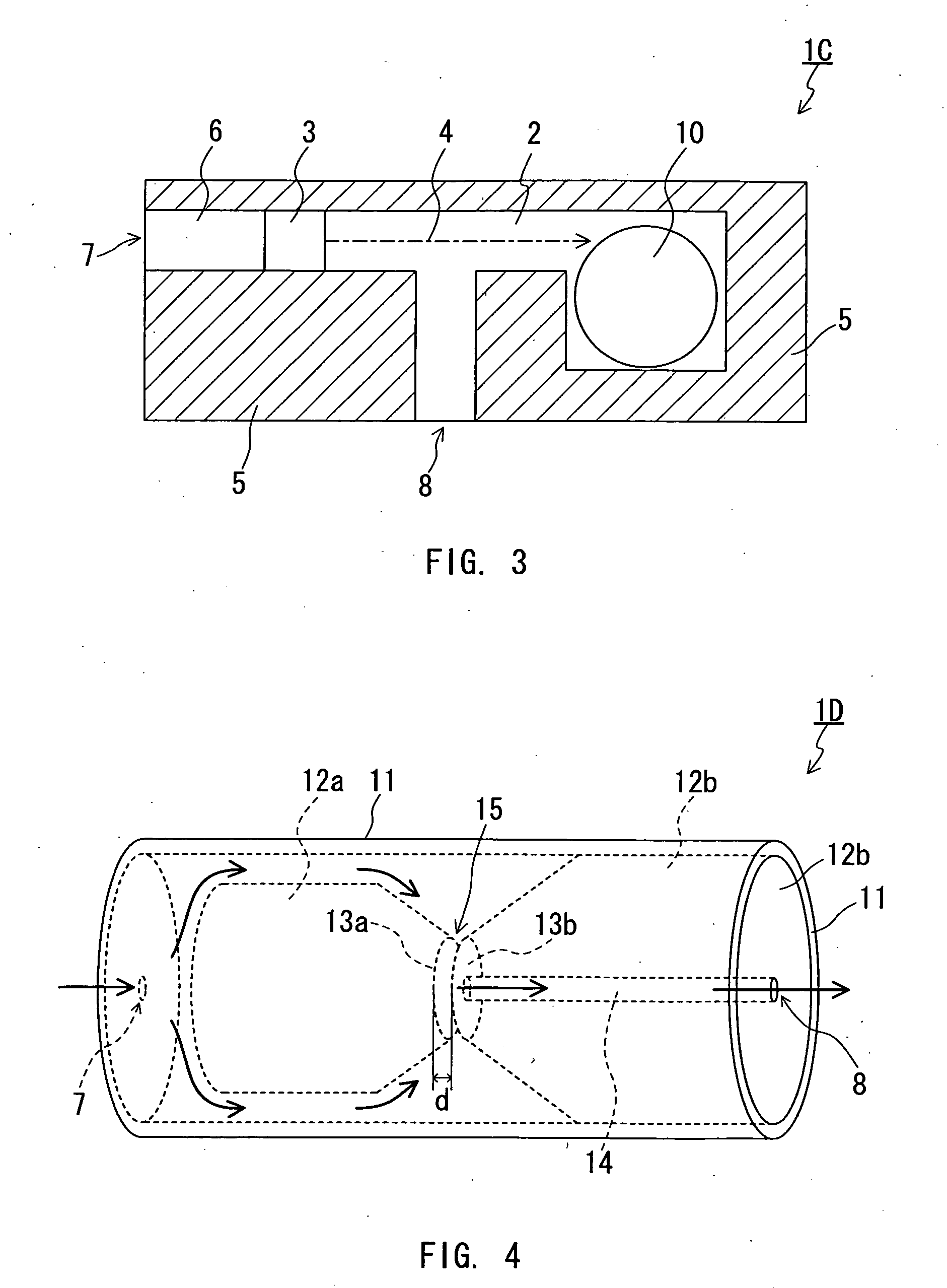Process for Production of Polytetrafluoroethylene Sheet, and Process for Production of Polytetrafluoroethylene Seal Tape
- Summary
- Abstract
- Description
- Claims
- Application Information
AI Technical Summary
Benefits of technology
Problems solved by technology
Method used
Image
Examples
example 1
[0109]In Example 1, AD938 (the content of the PTFE particles: 60 mass %; the content of the surfactant: 3 mass %; average particle diameter of PTFE particles: 0.3 μm) manufactured by Asahi Glass Co., Ltd., a commercially available PTFE dispersion, was employed for the dispersion. A sheet-like solid material was formed with the chamber 1A shown in FIG. 1, and the formed sheet-like solid material was dried and fired to fabricate a PTFE sheet.
[0110]The volume of the inside space 2 of the chamber 1A (the inner volume of the chamber 1A) was 200 cm3, a pair of nozzles 3a and 3b was disposed in the chamber each having a circular spraying orifice (ø 0.25 mm). Diamond was used for the part where the spraying orifice was formed at the nozzle head, and the nozzles 3a and 3b were disposed to cross the respective spraying directions 4a and 4b of the nozzles with each other. The outlet 8 (in a circular form, diameter of 10 mm) was connected with a pipe (a first pipe) having a cross section in a c...
reference example 1
[0116]In Reference Example 1, AD938 manufactured by Asahi Glass Co., Ltd. was employed for the dispersion. A solid material in a string form was formed with the chamber 1D shown in FIG. 4, and the formed solid material was dried and fired to fabricate a PTFE product in a string form.
[0117]The inner volume of the chamber 1D was 200 cm3, and the interval d of the narrowed space in the form of a slit was 0.1 mm by controlling the location of the inner units 12a and 12b. The outlet 8 (in a circular form, 10 mm of diameter) was connected with a pipe (a first pipe) having the cross section in a circular form, the inner diameter of 1.6 mm and the length of 200 mm.
[0118]The dispersion pressurized at 245 MPa was supplied to the chamber 1D. The amount of the supplied dispersion was approximately 0.5 L / min and the temperature of the dispersion was 25° C. No heating was applied to the chamber 1.
[0119]Several seconds after the start of the supply of the dispersion, the PTFE-containing solid mate...
reference example 2
[0122]In Reference Example 2, AD938 manufactured by Asahi Glass Co., Ltd. was employed for the dispersion. A PTFE solid material in a string form was formed with a pipe (a second pipe) 21 shown in FIG. 8. The pipe 21 had a bent portion 23 in the form of the letter L near one end 22 of the pipe 21 as a barrier inhibiting the flow of the dispersion. The pipe 21 had the inner diameter of 10 mm and the length 200 mm, and the bent portion 23 was located at a distance of 30 mm from the end 22 of the pipe 21.
[0123]A nozzle 25 (having a circular spraying orifice (ø 0.15 mm)) disposed at the end of the feeder 26 for the dispersion was located on the central axis of the pipe 21 described above. The nozzle 25 and the pipe 21 were disposed so that the other end 24 of the pipe 21 and the nozzle 25 were 5 mm, distant from each other (refer to FIG. 8), and then the dispersion was sprayed inside the pipe 21 from the nozzle 25 at the spray pressure of 160 MPa. The amount of the dispersion supplied t...
PUM
| Property | Measurement | Unit |
|---|---|---|
| Temperature | aaaaa | aaaaa |
| Force | aaaaa | aaaaa |
| Dispersion potential | aaaaa | aaaaa |
Abstract
Description
Claims
Application Information
 Login to View More
Login to View More - R&D
- Intellectual Property
- Life Sciences
- Materials
- Tech Scout
- Unparalleled Data Quality
- Higher Quality Content
- 60% Fewer Hallucinations
Browse by: Latest US Patents, China's latest patents, Technical Efficacy Thesaurus, Application Domain, Technology Topic, Popular Technical Reports.
© 2025 PatSnap. All rights reserved.Legal|Privacy policy|Modern Slavery Act Transparency Statement|Sitemap|About US| Contact US: help@patsnap.com



